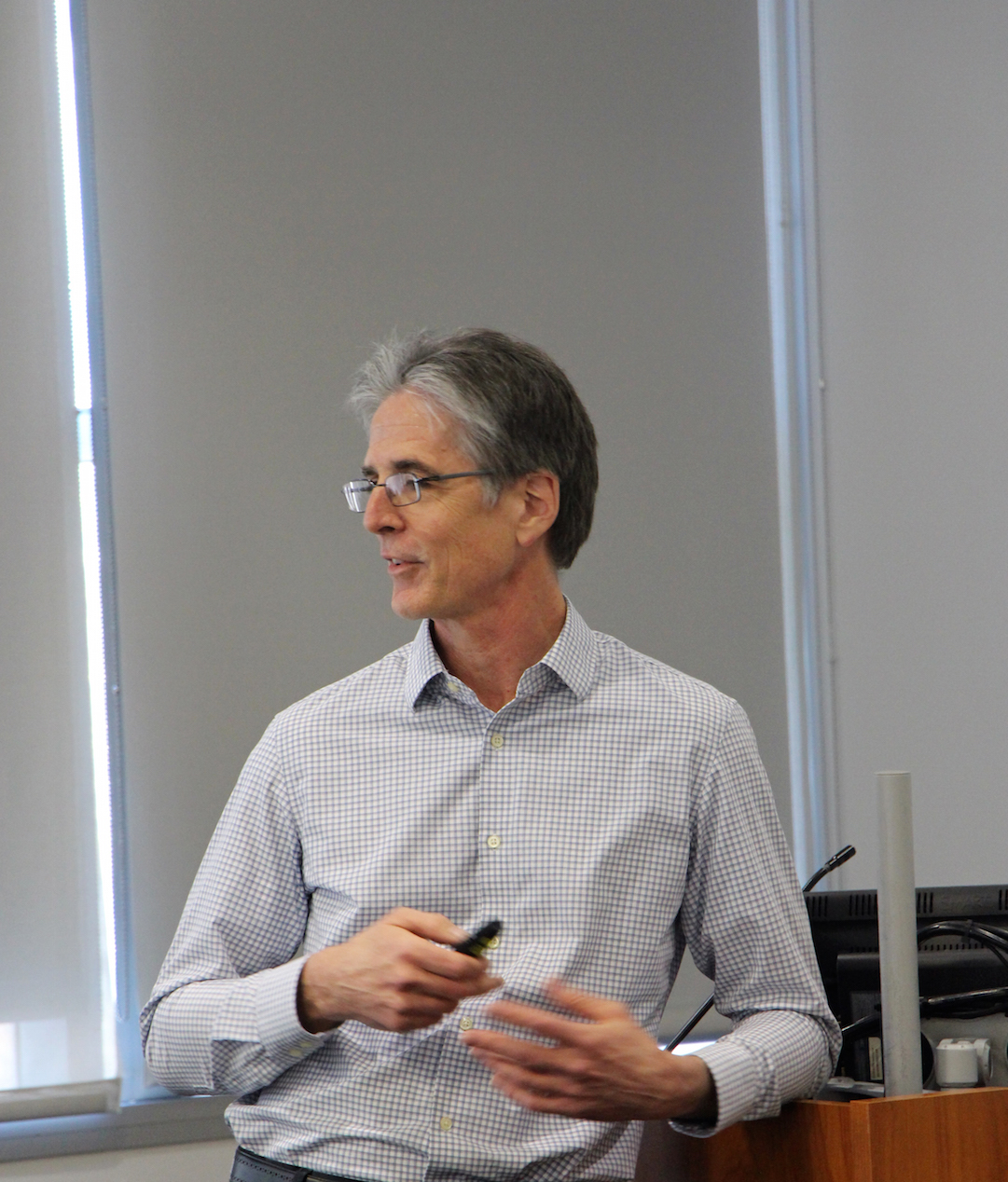Scientists who Wear Multiple Hats
The Faculty-to-Faculty events at the NYU Tandon School of Engineering are aimed at providing the school’s professors with a chance to speak to their colleagues about their latest research and advances in their respective scientific and technical fields. Thus, some may have been surprised when it was announced that March’s event would feature Andrew Hamilton, NYU’s new president. In addition to his leadership roles at Yale, the University of Oxford, and now NYU, however, Hamilton is a noted chemist who studied under Nobel Laureate Jean-Marie Lehn, and his research group has done work that may one day lead to new treatments for neurodegenerative diseases like Huntington's and Alzheimer's.
During his presentation, which was entitled “Targeting Protein Surfaces in Organic Chemistry and Human Disease,” Hamilton explained that he focuses on synthetic chemistry — the design and synthesis of molecules that have never before existed on the face of the earth. Synthetic chemistry takes its inspiration, he said, from the “glory of biological structures and functions,” and the principal question he and his colleagues ask themselves is whether they can mimic nature in their own designs.
He asserted that nature has only limited chemical building blocks, while synthetic chemists have the advantage of seemingly limitless design possibilities, but that when it comes to time, the advantage goes unequivocally to nature, which evolves over hundreds of millions of years: a synthetic chemist, on the other hand, has only the course of his or her career to create important, new molecules.
Although he is uninterested in resting on his laurels and intends to maintain a research group despite the demands of his university position, Hamilton has already made significant breakthroughs in using synthetic small molecules to inhibit protein-protein interactions. Aberrant protein-protein interactions figure largely in disease, he explained to the non-chemists in the audience, and if scientists can block the spontaneous aggregation of amyloid proteins that is thought to cause such diseases as Alzheimer’s, Parkinson’s, and Huntington’s, novel therapeutics could be developed.

David Pine, Professor and Department Chair of Chemical and Biomolecular Engineering
Also on hand at the event was David Pine, the chair of Tandon’s Department of Chemical and Biomolecular Engineering, who discussed his work with colloids — which consist of large molecules or ultramicroscopic particles of one substance, dispersed through a second substance. (Paint and milk are both colloids, he pointed out, as are opals; in the case of the gemstones, spheres of silicon dioxide self-assemble into orderly stacks that diffract light, resulting in luminous colors.)
Pine’s research involves synthesizing new colloids that self-assemble, in a similar way, into specific patterns, and his lab has discovered a revolutionary method for using chemically functionalized “sticky” patches to create colloids with specific directional bonding — a finding with possible applications in a variety of industries, including photonics and healthcare. “We are at the start of an entirely new phase of materials science,” he told his audience.
A lively question-and-answer period followed each presentation, making it evident that the faculty members in attendance were most excited to be hearing from Hamilton and Pine as fellow scientists — not as university president and department chair.





